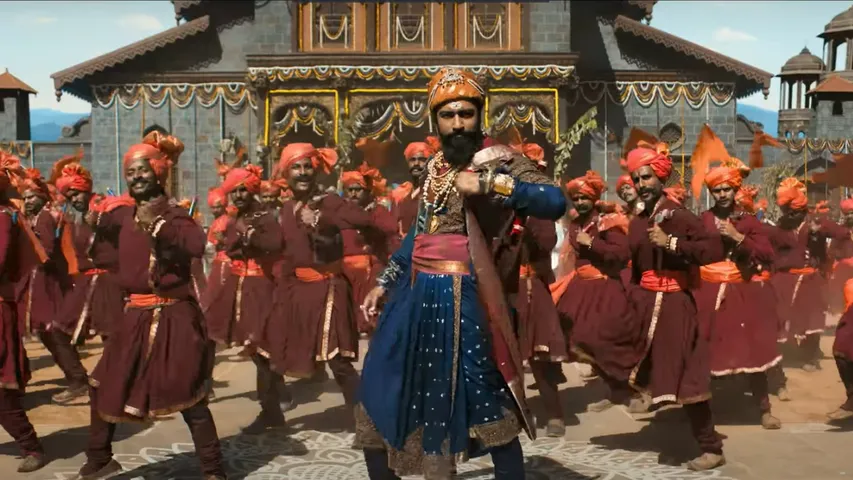Chhaava Sparks Debate: Creative Freedom vs Historical Accuracy

The representation of historical events and figures in cinema has often stirred debates about the balance between creative freedom and historical accuracy. While movies based on history provide an excellent platform to introduce audiences to the grandeur and cultural richness of the past, they also carry the responsibility of accurately portraying revered figures and events. The controversy surrounding the upcoming film Chhaava—which chronicles the life of Chhatrapati Sambhaji Maharaj—has reignited discussions about how filmmakers approach historical narratives. Instances like Padmavaat and Bajirao Mastani offer additional context to analyze the broader implications of commercializing historical elements.
This case study delves into the risks of commercializing historical content, examines how misrepresentations can ignite public outrage, and explores how historical films can strike a balance between entertainment and education.
The Chhaava Controversy
Chhaava, starring Vicky Kaushal as Chhatrapati Sambhaji Maharaj and Rashmika Mandanna as Maharani Yesubai, is the latest example of a historical drama mired in controversy. The backlash erupted over a particular scene in the movie’s trailer, where the Maratha king and queen are depicted performing the Lezim dance—a traditional folk dance of Maharashtra. Critics argue that such portrayals trivialize the legacy of Sambhaji Maharaj, a revered Maratha ruler and warrior known for his resistance against Mughal forces.
Prominent figures like Maharashtra Cabinet Minister Uday Samant and Sambhajiraje Chhatrapati, a descendant of Chhatrapati Shivaji Maharaj, have criticized the scene for its lack of historical authenticity. Their demands for the scene’s removal reflect a growing concern over how filmmakers take creative liberties that clash with historical realities. The film’s director, Laxman Utekar, responded by meeting with Maharashtra Navnirman Sena (MNS) chief Raj Thackeray and agreed to remove the scene.
This incident is a microcosm of the broader debate about whether history should be modified for commercial purposes and how filmmakers can navigate these challenges without compromising authenticity.
Why Commercializing Historical Elements is Problematic
- Loss of Historical Authenticity
When filmmakers prioritize commercial appeal over historical accuracy, the essence of the narrative is often lost. In the case of Chhaava, a historically revered warrior-king is portrayed in a way that many perceive as frivolous. Such creative liberties dilute the gravity of historical achievements, misleading audiences who may take the cinematic portrayal as fact. - Cultural Sensitivities
Historical figures like Chhatrapati Sambhaji Maharaj are not just historical entities; they hold deep cultural and emotional significance for certain communities. Misrepresenting them can lead to public outrage, protests, and even legal challenges. Padmavaat serves as another example of this. The movie faced severe backlash from Rajput groups, who accused the filmmakers of distorting the legacy of Rani Padmini. - Political and Social Ramifications
Movies based on historical themes often become the focal point of political and social tensions. In the case of Chhaava, political figures and descendants of Maratha rulers have stepped in to demand corrections, turning what was intended to be an artistic endeavor into a contentious issue. Similarly, Padmavaat was banned in certain states due to the intensity of public opposition, creating a precedent for how political entities can wield influence over historical narratives in cinema.
Case Studies: Padmavaat and Bajirao Mastani
Padmavaat: A Lesson in Misrepresentation
Directed by Sanjay Leela Bhansali, Padmavaat was initially titled Padmavati. The film claimed to depict the story of Rani Padmini, a legendary queen known for committing jauhar to protect her honor from Alauddin Khilji. However, the depiction of a dream sequence between Rani Padmini and Khilji enraged Rajput groups, who argued that it tarnished their queen’s legacy.
The backlash led to violent protests, damage to public property, and threats against the filmmakers. While Bhansali eventually clarified that no such sequence existed, the controversy highlights how even the mere perception of misrepresentation can lead to widespread unrest. The film’s commercial success, however, raises questions about whether controversy itself becomes a marketing tool.
Bajirao Mastani: A Tale of Love or Misrepresentation?
Another Bhansali-directed film, Bajirao Mastani, focused on the love story between Peshwa Bajirao I and Mastani. While the film was lauded for its cinematography and performances, historians criticized its portrayal of Bajirao as a romantic figure, sidelining his political and military achievements. Critics also pointed out inaccuracies in the depiction of his relationship with Kashibai, his first wife, who was shown as a docile character when historical records suggest otherwise.
The romanticized narrative, while commercially successful, overshadowed the complexity of Bajirao’s life and the socio-political dynamics of the Maratha Empire during his reign. This misrepresentation exemplifies how commercial interests can dilute the nuances of history.
The Challenges of Balancing Entertainment and Accuracy
Historical dramas are inherently challenging because they require filmmakers to strike a balance between factual accuracy and cinematic appeal. While some creative liberties are inevitable, they must not distort the core essence of historical events or figures.
- Audience Expectations
Viewers often expect historical films to serve as both entertainment and a source of knowledge. When filmmakers deviate too far from historical facts, they risk alienating audiences who value authenticity. - The Role of Historians
Consulting historians and cultural experts is crucial for maintaining accuracy. For instance, Lagaan, though fictional, was lauded for its detailed depiction of colonial India because the filmmakers consulted experts to ensure cultural and historical authenticity. - The Allure of Drama
Adding drama to historical narratives can make them more engaging but also more contentious. For example, Jodhaa Akbar faced criticism for portraying a romantic relationship between Emperor Akbar and Jodhaa Bai, a connection that some historians contest.
The Global Perspective: Historical Dramas in Hollywood
The debate over historical authenticity is not confined to Indian cinema. Hollywood has faced similar controversies with films like Braveheart and The Patriot, both criticized for their historical inaccuracies. However, these films were still celebrated for their storytelling and emotional depth, showing that audiences are willing to overlook certain inaccuracies if the narrative is compelling.
The difference lies in the cultural sensitivities associated with historical figures. In India, historical dramas often become a matter of collective pride and identity, making inaccuracies more contentious.
How Filmmakers Can Avoid Controversy
- Thorough Research
Filmmakers must invest in detailed research to ensure historical accuracy. Consulting historians, cultural experts, and primary sources can help avoid misrepresentation. - Transparent Communication
Clearly communicating the fictional elements of a story can set appropriate audience expectations. For instance, labeling a film as “inspired by true events” rather than “based on true events” can mitigate backlash. - Sensitivity Training
Understanding the cultural and emotional significance of historical figures can help filmmakers approach their stories with the necessary sensitivity. - Engaging with Communities
Collaborating with communities associated with the historical figures or events being portrayed can foster trust and ensure accurate representation.
The Road Ahead for Chhaava and Similar Films
The controversy surrounding Chhaava serves as a cautionary tale for filmmakers delving into historical dramas. While the decision to remove the contentious scene has been praised, it also underscores the importance of avoiding such pitfalls during the filmmaking process itself.
As the film approaches its release, it will be interesting to see how audiences and critics respond to its portrayal of Chhatrapati Sambhaji Maharaj. The incident also highlights the need for filmmakers to view historical narratives not just as a canvas for artistic expression but as a responsibility to honor the legacy of the past.
The commercialization of historical elements in cinema is a double-edged sword. While it has the potential to educate and inspire, it also carries the risk of distorting history for the sake of drama and profit. Films like Padmavaat, Bajirao Mastani, and now Chhaava show that audiences and stakeholders are increasingly demanding accountability and accuracy in historical portrayals.
Filmmakers must recognize that history is more than a backdrop for entertainment; it is a shared heritage that deserves respect and careful representation. By embracing research, collaboration, and transparency, the film industry can strike a balance between storytelling and authenticity, creating works that entertain while honoring the legacies they depict.
Also Read: Sky Force Movie Review: A High-Flying Tribute to Valor













